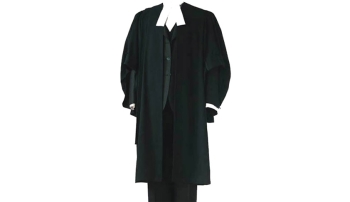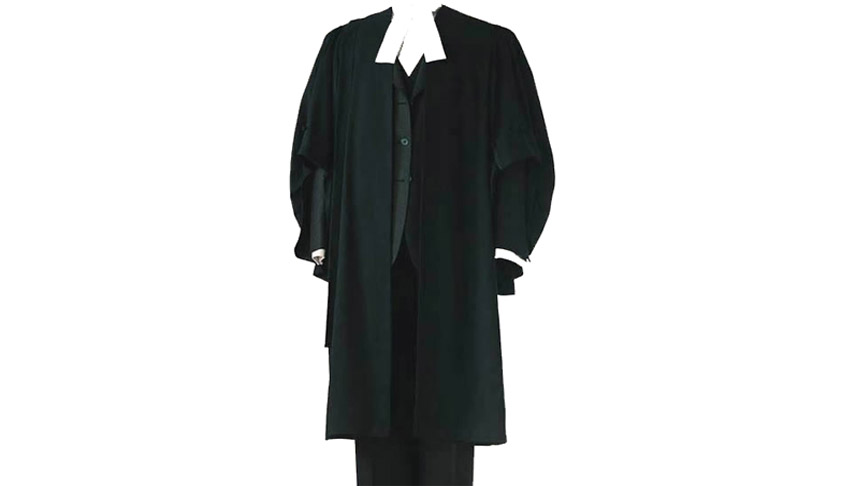
.jpg) F. I. Choudhury
F. I. Choudhury

The Bar Council of India, the apex body of the lawyers, prescribes the dress code for the advocates and mandates that it should be sober and dignified. Importance of wearing proper dress is to bring discipline in profession and to create confidence among lawyers. Black is believed to be the color of authority and it makes a lawyer look professional and dignified. According to an article published in the Personality and Social Psychology Bulletin, the monthly scientific journal published by SAGE Publications, the outward appearance and what we wear is a top factor in how we’re perceived by others.
Recently the Gauhati High Court called the police personnel to escort a senior advocate out of the court premises when he had come to argue a case wearing denim jeans. The Supreme Court in the case of Satish Kumar Sharma v. Bar Council of H.P., [2001] has held that the Advocates form a class by itself while making the following observations:
“… The profession of law is called a noble profession. It does not remain noble merely by calling it as such, unless there is a continued, corresponding and expected performance of a noble profession. Its nobility has to be preserved, protected and promoted. An institution cannot survive on its name or on its past glory alone. The glory and greatness of an institution depends on its continued and meaningful performance with grace and dignity. The profession of law being noble and an honourable one, it has to continue its meaningful, useful and purposeful performance inspired by and keeping in view the high and rich traditions consistent with its grace, dignity, utility and prestige. Hence the provisions of the Act and the Rules made thereunder inter alia aimed to achieve the same ought to be given effect to in their true letter and spirit to maintain clean and efficient Bar in the country to serve the cause of justice which again is a noble one.”
The earliest reported controversy on lawyers’ dress code happened in the seventies when an advocate came to the court to argue his case wearing ‘Dhoti’ and ‘Kurta’. Enraged by the dress, the Civil Judge, Bulandshahar prevented the lawyer from appearing in his court in dhoti. Challenging the order, the lawyer filed a petition before the Allahabad High Court. While dismissing the petition in-limini the High Court observed (1974):
“........If the Court possessed the legal power to prevent the petitioner from appearing before it otherwise than in prescribed dress, the exercise of that power would not be vitiated merely for the reason that the same was not exercised against all or other members of the Bar practising at Bulandshahr...”
Many years later in 2015, a PIL came to be filed in Kerala High Court challenging the dress code of advocates prescribed by the Bar Council of India contending that the existing dress known as ‘British mourning dress’ as it came to be widely used since the mourning for Queen Mary’s death in 1694, causes discomfort to the lawyers during the summer. While dismissing the plea, the Kerala High Court observed that providing a dress code for those practising in various Courts can only be termed as a reasonable restriction and cannot be termed as arbitrary or unreasonable. It further emphasized that;
“The dress worn by the Advocate clearly induces the seriousness of purpose and a sense of decorum which are highly necessary and conducive for the dispensation of justice”.
Justice Khehar while acting as the CJI took strong objection to the lawyer appearing before him wearing a ‘bandhgala’ jacket with top buttons open. The Court told the lawyer that he would not be heard until he was properly dressed. Justice Indu Malhotra (retd.) soon after her elevation to the Bench in Supreme Court expressed displeasure over the improper 'professional attire' of women lawyers.
Judiciary on lawyers’ dress code was largely conservative and consistent until now, when in 2021 the Allahabad High Court took cognizance of a PIL that questioned the lawyers’ dress code on the ground that the ‘band’ is a symbol of Christianity and the dress code is unsuitable to the climatic conditions of the country. The petition contended that the Bar Council of India’s rules for prescribing lawyers’ dress-code is ultra-vires to the fundamental rights guaranteed by Articles 14, 21 and 25 of the Constitution and against the provision of Advocates Act, 1961 that mandates to have regard to the climatic condition for prescribing the dress code.
Bar Council of India’s response that a five-member committee will take a call on the issue is a ‘gift cake’ on the long standing debate whether lawyers’ dress code needs re-tailoring. Union law minister’s recent comment that a uniform suited to our weather condition would be better is ‘icing’ on the ‘gift cake’. Executive interest in lawyers’ attire hints that the colonial ‘band’ & ‘robe’ will probably change and the ‘legal eagle’ will fly in ‘desi’ regalia.
(The writer is Advocate-on-Record, Supreme Court of India: Contact:+91-9810-96-91-95, Email: fichoudhury@gmail.com)